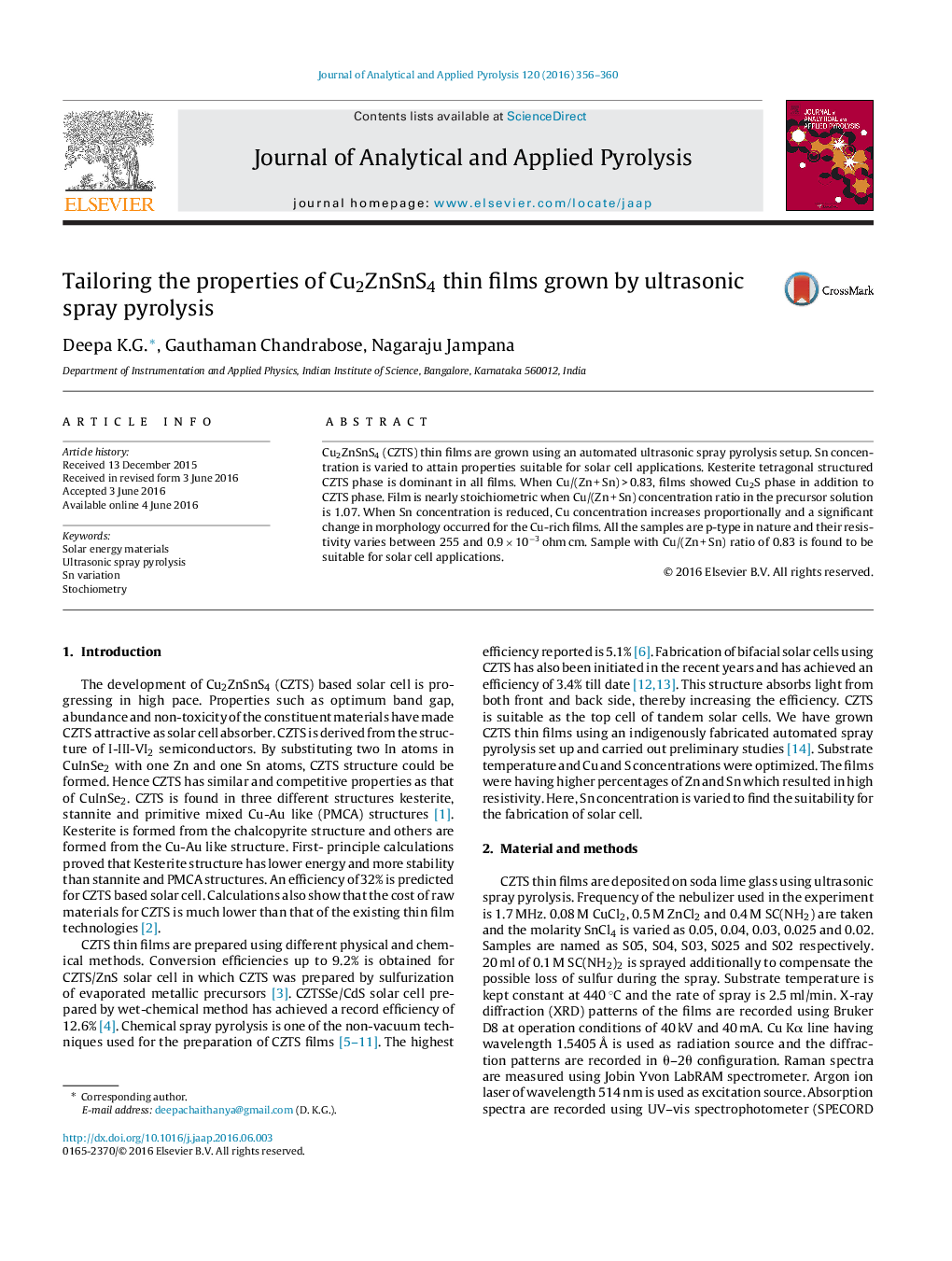| Article ID | Journal | Published Year | Pages | File Type |
|---|---|---|---|---|
| 1196562 | Journal of Analytical and Applied Pyrolysis | 2016 | 5 Pages |
•Kesterite structured CZTS thin films are grown by ultrasonic spray pyrolysis.•Sn concentration is varied to get suitable film for cell fabrication.•When Cu/(Zn + Sn) 0.83, films showed Cu2S phase in addition to CZTS phase.•Films grown with Cu/(Zn + Sn) ratio of 0.83 are found to be optimum.•Optimized P-type films showed a resitivity of 26 ohm cm and mobility 15 cm2/Vs.
Cu2ZnSnS4 (CZTS) thin films are grown using an automated ultrasonic spray pyrolysis setup. Sn concentration is varied to attain properties suitable for solar cell applications. Kesterite tetragonal structured CZTS phase is dominant in all films. When Cu/(Zn + Sn) > 0.83, films showed Cu2S phase in addition to CZTS phase. Film is nearly stoichiometric when Cu/(Zn + Sn) concentration ratio in the precursor solution is 1.07. When Sn concentration is reduced, Cu concentration increases proportionally and a significant change in morphology occurred for the Cu-rich films. All the samples are p-type in nature and their resistivity varies between 255 and 0.9 × 10−3 ohm cm. Sample with Cu/(Zn + Sn) ratio of 0.83 is found to be suitable for solar cell applications.
